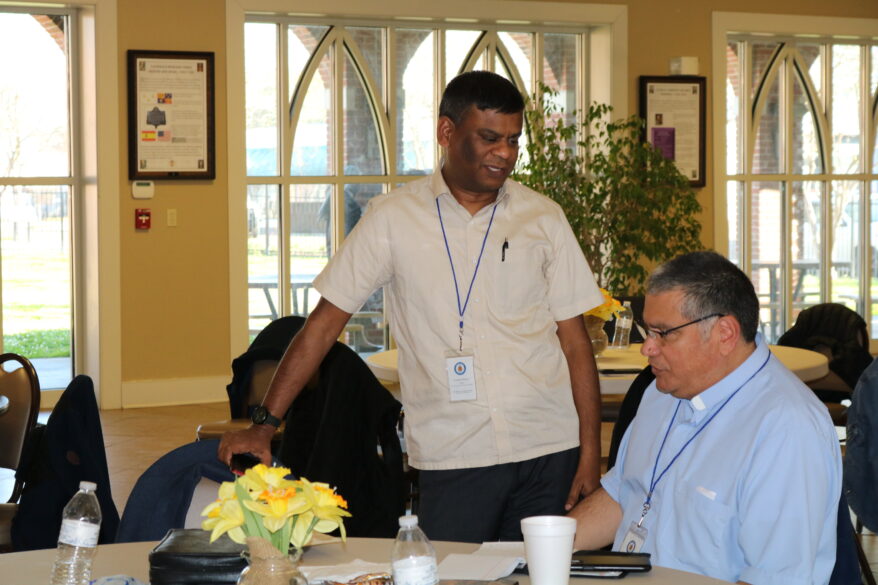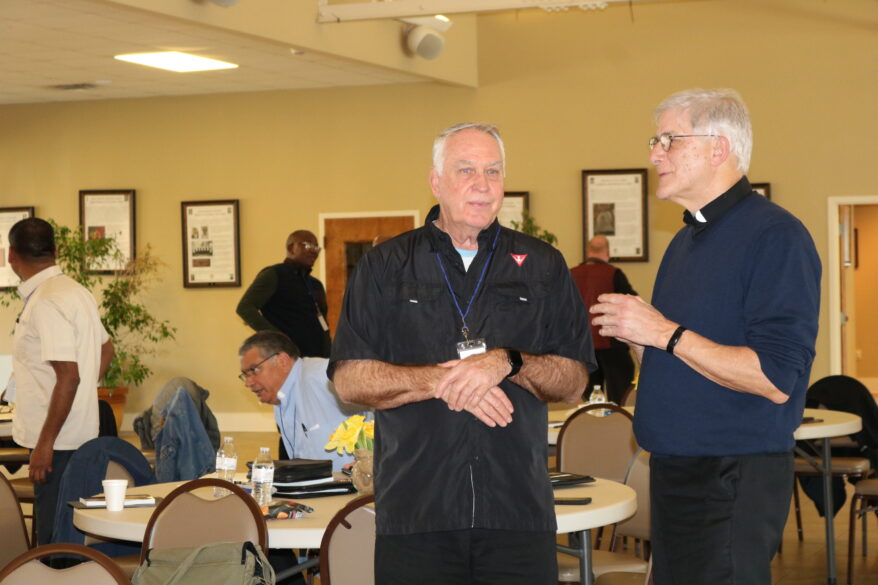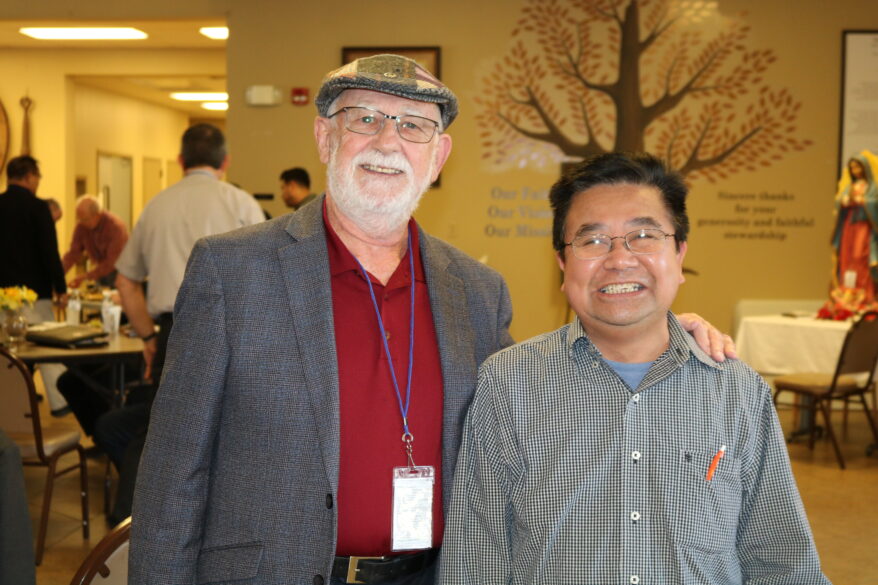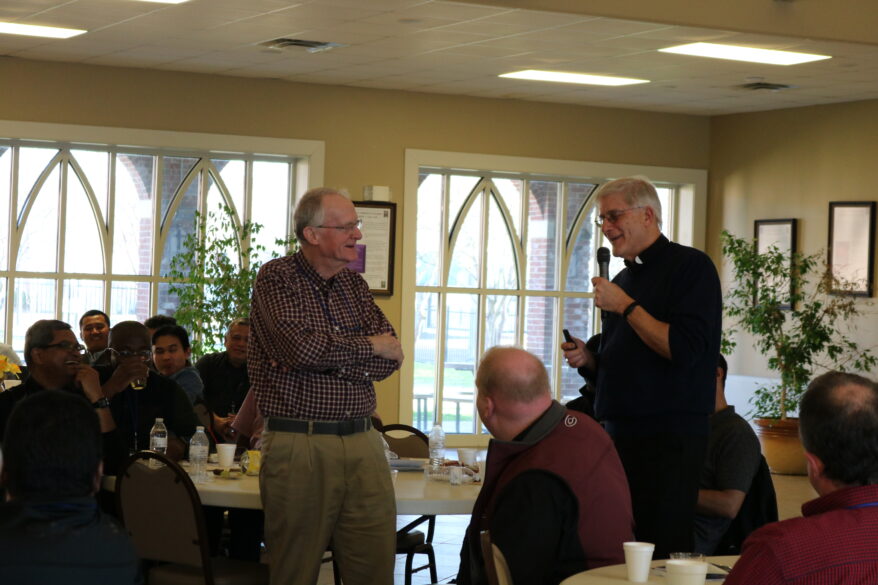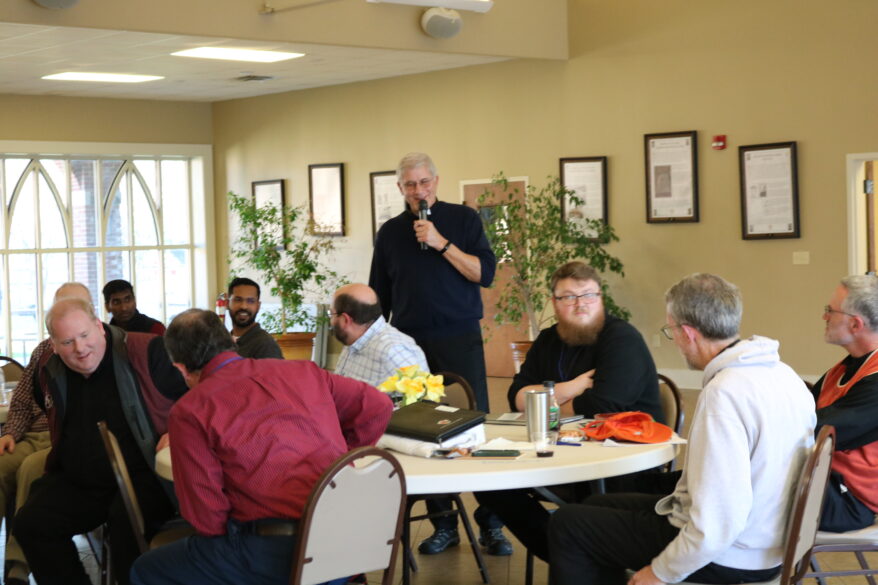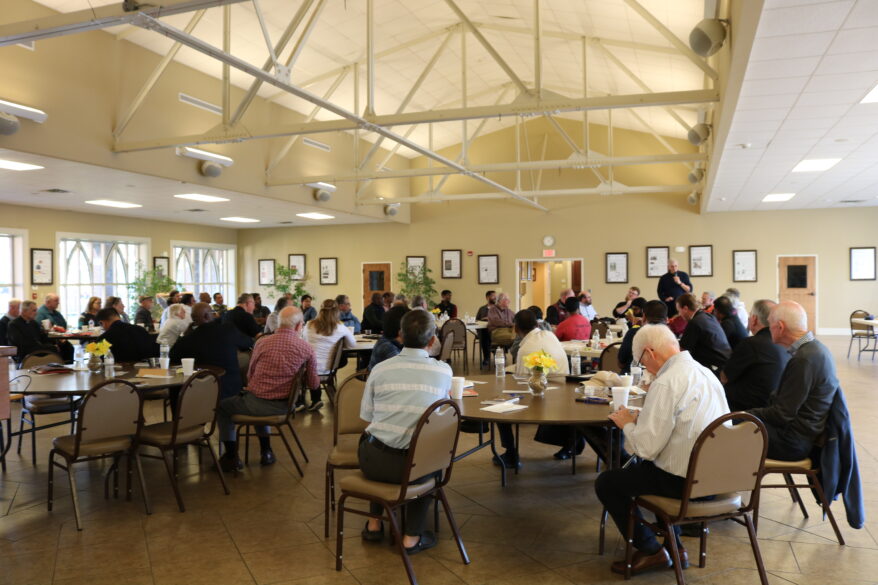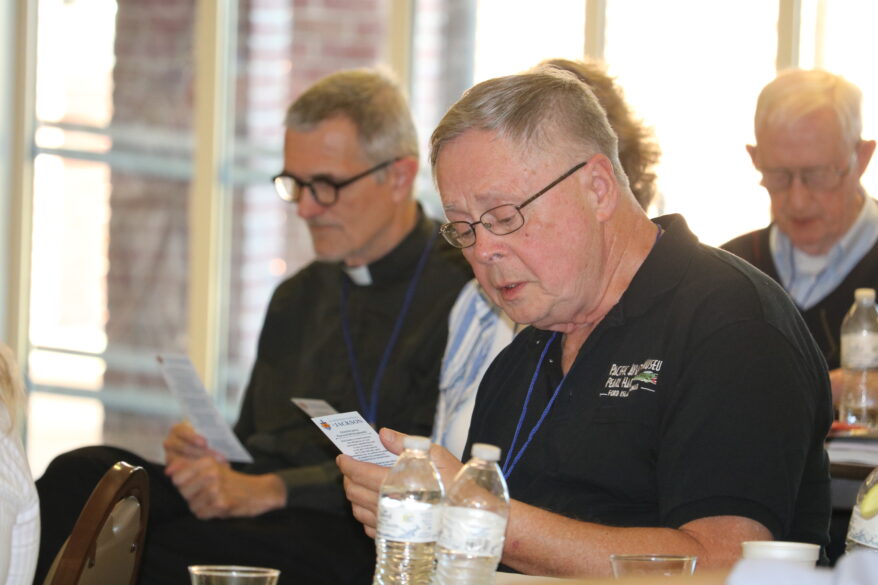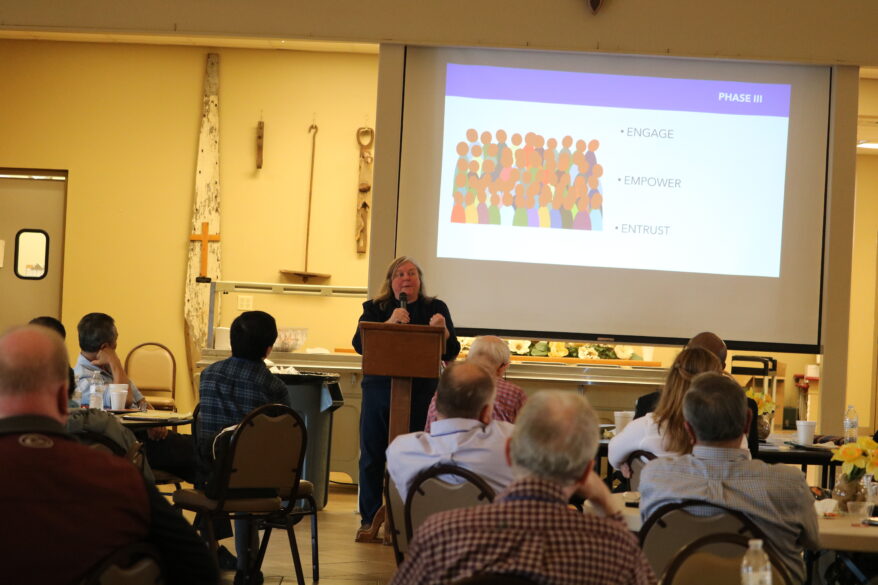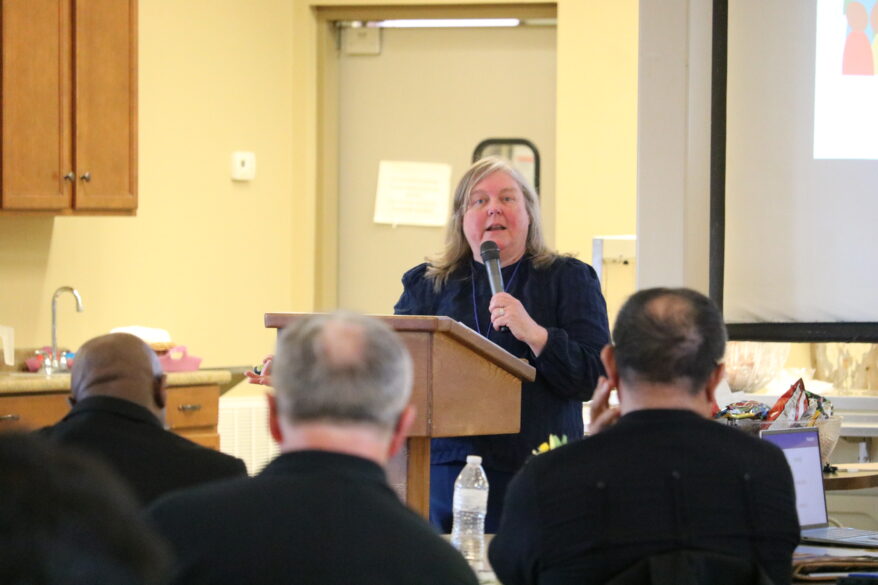By Joanna Puddister King
JACKSON – The Diocese of Jackson began a year-long pastoral reimagining process at Pentecost 2023 and looks to conclude by Pentecost this year. This process was initiated as a result of the diocesan Synod on Synodality in 2021.
During the Synod process three priorities were articulated across the diocese which included all demographics (age, gender, race, etc.). They were a call for healing and unity; greater catechesis at all levels; and a deeper understanding of scripture.
The reimagining process spreads across five major phases. The first phase ran from Pentecost through early September of 2023, with each pastor or lay ecclesial minister (LEM) establishing a pastoral reimagining committee and having the committee view four ecclesiology video sessions and answer a series of questions designed to guide conversation on who we are as a church.
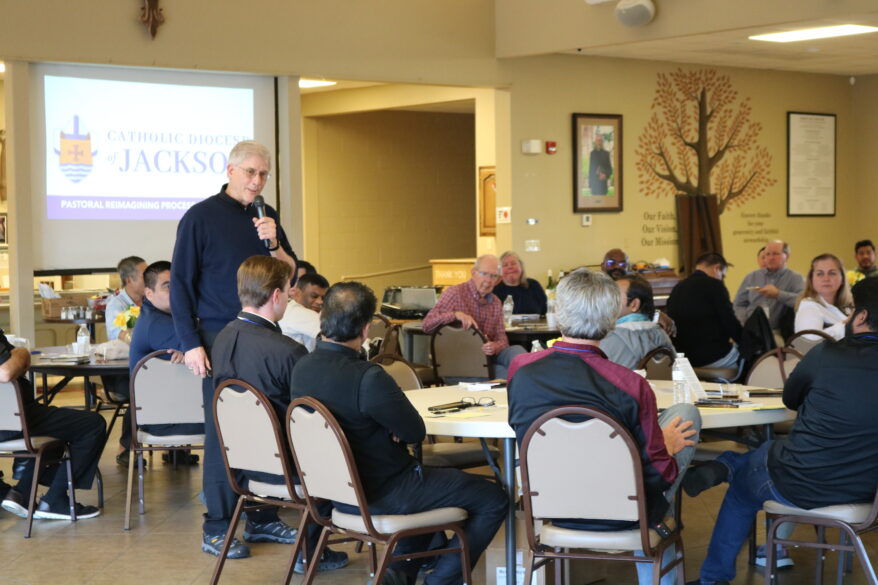
Bishop Kopacz said that phase one, “set the table in reminding ourselves what it means to be a church and what our identity as Catholics requires of us in the world. Our desire was to create a common understanding from which to grow a vision for the Diocese of Jackson.”
“In other words, to foster a sense of unity underscored by the four marks of the church.”
Parishes were given until the end of January this year to complete phase two, with each parish undertaking a parish assessment which included the current situation at the local parish – the growing edges; the areas that are diminishing; and the opportunities for collaboration with other parishes in the area and other local realities.
Bishop Kopacz previously stated that in phase two, “we will reimagine the responsibilities of each parish and mission to foster a sense of unity, underscored by the four marks of the church and grounded in data,” said Bishop Kopacz.
This phase also included a detailed report on diocesan demographics by the Center for Applied Research in the Apostolate (CARA) of Georgetown University. The report summarizes the overall demography of the diocese, as well as a profile of the Catholic population living in the confines of the diocese.
“After analyzing the demographic data, parishes were given opportunities to look to the report for areas of growth; to evaluate ministries and evaluate challenges that could be addressed,” said Fran Lavelle, director of faith formation for the diocese and member of the core team working on the reimagining process.
At a convocation for priests, deacons and LEMs held in Natchez during February, Bishop Kopacz and Lavelle covered findings from phase two from the CARA report and gave an overview to those gathered on phase three of the reimagining process.
The report indicated that during COVID, as expected, there was a 50% decline in all Sacraments within the diocese, with the exception of infant Baptisms and Confirmations, which each saw 39% declines.
Bishop Kopacz reported at the convocation that the CARA research indicates that nationally Mass attendance is now only 2% below pre-COVID levels.
Part of the CARA report highlighted the Pew Religious Landscape Study from 2014, in which 4% of adult respondents living within the Diocese of Jackson self-identified as Catholic. With a reported current population of 2,138,154 within the diocese, the survey-based estimates would assume that there are 85,513 Catholics within the diocese, reported Bishop Kopacz.
In 2021, the reported Catholics registered at parishes numbered 42,850. “Thus, one can assume there are approximately 42,663 self-identified Catholics in the diocese who are not attending Mass or active in a parish in any other way,” said Bishop Kopacz to those gathered at the convocation.
“So, there are many who could be welcomed back and evangelized.”
If current trends continue, the Catholic population of the diocese is expected to grow to nearly 54,000 by 2030; and to nearly 56,000 by 2040.
Bishop Kopacz also highlighted the growing Hispanic population and raised the question to consider – how do we serve them faithfully and effectively.
“I’m grateful to a number of our parishes that have opened up with inviting the Hispanic population through having Mass and liturgy. It’s just amazing to see the growth.”
Bishop Kopacz reported that some parishes, like Sacred Heart in Canton, are considering adding second Spanish Masses to accommodate the numbers attending with sometimes only standing room left available.
The synthesis of the parish reports from phase two of the reimagining process showed areas of opportunities, such as the growing Hispanic population, outreach to different ethnic groups within the diocese and economic development in various areas of the diocese. The growing Hispanic population was also pointed out as one of three challenges within the Diocese of Jackson – specifically in how to evangelize to the population. The two other challenges include the aging population and the migration of young adults out of the state.
At the convocation event, each priest within their respective deaneries received the reports each completed in phase two with the data analysis they completed, as they enter phase three of the reimagining process. “Each parish has identified their reality and what’s important … like exploring growth opportunities in general, such as reaching the growing Hispanic population,” said Bishop Kopacz.
He also reminded each to remember the theme of the synod to reach a deeper level of “Communion, Participation and Mission” as they meet to examine their respective deaneries and parishes.
This month, the third phase of the reimagining process will consist of guided and facilitated sessions for each of the Diocese of Jackson’s six deaneries to work through challenges, both the growing edges and diminishing areas of ministry locally and within the deanery.
“The goal of phase three is to gain a realistic perspective of the health and well-being of the deanery within the setting of the individual parishes; and to look at areas of redundancy and potential areas for sharing resources,” shared Lavelle.
As for the reports compiled from almost every parish, Lavelle said the material “is very powerful and that a lot of really good, thoughtful work has been done on the parish level to look at challenges, growing edges and to as what is it that is needed to continue to grow our parishes.”
Lavelle also pointed out it is not just about priest or religious making change in their respective parishes. “We have to start thinking about who it is that occupies our pews on the weekend and engage them and empower them to do the work with us.”
In April, Bishop Kopacz will be visiting each deanery to celebrate a Mass of Thanksgiving and meet with the key people who worked on the pastoral reimagining for each parish.
Pope Francis through the synod process asked bishops to engage their respective dioceses more. Bishop Kopacz said that through the deanery visits and engaging in “a Thanksgiving Eucharistic conversation,” the diocese is doing just that through the reimagining process through fruitful dialogue, discernment and the openness to the Holy Spirit.
The fourth phase of the reimagining process will include a period of discernment on reports from the six deaneries in the diocese and a pastoral letter from Bishop Kopacz, outlining the finding in each deanery and set forth parameters for implementation of an overall diocesan vision.
“I think faithful to the spirit of synodality and all that can come from that through the power of the Holy Spirit … this is a good process that will bear fruit moving to the future,” said Bishop Kopacz.
